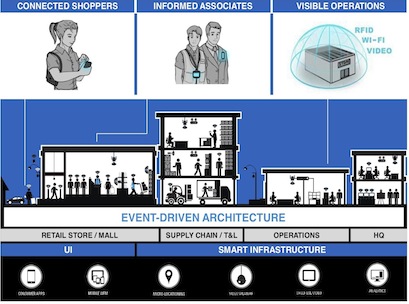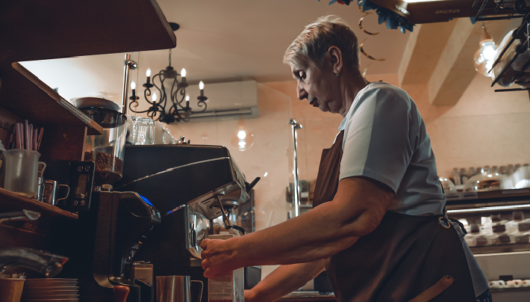 “It’s not about the systems or technology itself, but what that technology enables,” Eduardo Conrado, senior VP marketing and IT at Motorola told the 2013 Westfield World Retail Study Tour at a presentation in New York.
“It’s not about the systems or technology itself, but what that technology enables,” Eduardo Conrado, senior VP marketing and IT at Motorola told the 2013 Westfield World Retail Study Tour at a presentation in New York.
Conrado addressed the Westfield World Retail Study Tour group on change within the retail technology market and innovations Motorola has identified as changing the retail environment – an evolution it calls the connected shopper.
“When we look at retail and how it is enabled through technology, we look at it in three key areas, and one of them is the ‘connected shopper’.
“These are customers that bring their own technology with them to stores. How do we interact with them to enable that one to one relationship within the store environment?” Conrado asked.
“On the opposite end is the informed associate, and the third piece is what we call visible operations.
“When we talk about systems of transaction and systems of relationship within the store we look at all the networks that are in place, to enable our team and operations to give full visibility not only to the shopper, but also to sales associates and store managers, enabling that relationship and omni-channel.”
Connected shoppers, informed associates, and operations within the store environment are banded together to produce the technology.
“On the user experience (UI) we spend a lot of time on app design, on what it looks like from the shoppers’ point of view, but just as important, what it looks like in the hands of the sales associate.
“You have this end to end view, its not a single app, it’s an experience going from the shopper into the store, into the hands of the sales associate.
“We also look at how we tie into the back end system, to enable mobile workforce management, such as loudcasts that are driven by the manager into the systems, and then into the hands of associates based on the devices they are using.”
An example of these three elements in progress can be seen in UK-supermarket chain, Tesco.
Tesco approached Motorola with a request to provide a product that “gives a little bit of technology to a lot of people in the store”.
When Motorola asked Tesco sales associates what they did, they named price checks, inventory checks, communicating with one another, and assigning tasks.
“How do you automate workforce management? Not through the hands of the manager, but through the systems that they had,” Conrado said.
“We ended up designing what we call the smart badge, a small piece of equipment that is worn as a badge.The workers use it to check in as they start work, but it enables price checking, inventory checking, communication, and workforce management, so the system automatically assigns the best associate for a customer’s question or task.”
Other factors considered as part of the connected shopper process are micro-location, allowing for merchandise to be found instore, and shelf technology which enables RFID chips or video monitoring to provide a signal that products have sold out. The last piece of the puzzle is analytics, which sits on the back end.
“At the end of the day we’re looking at an event driven architecture that ties all the pieces together, making that technology usable for the consumer and sales associates,” said Conrado.
This story originally appeared in Inside Retail Magazine’s August/September 2013 edition as part of our exclusive coverage on the 2013 Westfield World Retail Study Tour.
Inside Retail Magazine’s October/November issue, featuring Inside Retail Magazine’s annual 50 Most Powerful Retailers List is available now. For more information, click here.





